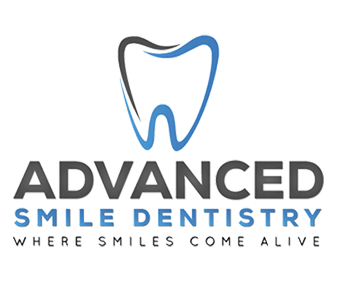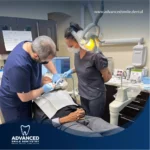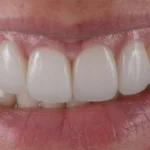When Can I Eat Solid Food After Tooth Extraction

When can I Eat After Tooth Extraction or Wisdom Teeth Removal?
After a tooth extraction, it’s essential to follow the dentist’s or oral surgeon’s instructions for a smooth and speedy recovery.
The timeline for when you can resume eating solid foods may vary depending on the complexity of the extraction and your body’s healing process. However, here are some general guidelines:
- Immediate post-extraction period (first 24 hours): It is best to avoid eating solid foods immediately after the tooth extraction. During this time, you should stick to a soft or liquid diet to allow the extraction site to begin the healing process without disruption. Focus on consuming cool or lukewarm soft foods, such as soups, broths, yogurt, pudding, mashed potatoes, and smoothies.
- Days 2 to 7: In the days following the extraction, you may gradually introduce slightly more solid foods into your diet as long as they do not require chewing or biting. Continue to prioritize soft foods, avoiding anything too hot or spicy that could irritate the healing area. Examples include scrambled eggs, well-cooked pasta, soft fruits, and cooked vegetables.
- Days 7 and beyond: As the healing progresses and your dentist or oral surgeon confirms that the extraction site is healing well, you can start adding more solid foods back into your diet. However, it’s still essential to avoid hard, crunchy, or sticky foods that could disturb the healing process or get stuck in the extraction site.
- Chewing on the opposite side: Regardless of the food texture, try to chew on the opposite side of the mouth from where the extraction occurred to minimize any pressure on the healing area.
Remember to stay hydrated throughout the recovery period, but avoid using straws for drinking, as the suction can dislodge the blood clot in the extraction site and lead to complications.
It’s crucial to listen to your body and not rush the process of reintroducing solid foods. If you experience any pain, bleeding, or other concerning symptoms, contact your dentist or oral surgeon immediately.
The answer to the question “when can you eat solid food after wisdom tooth extraction” is the same. Please follow these rules. You can contact us for more information.
How soon can I Eat ice Cream After Tooth Extraction?
After a tooth extraction, it’s generally recommended to avoid consuming ice cream or any other cold, frozen treats immediately after the procedure.
In the first 24 hours following the extraction, it’s essential to follow a soft or liquid diet to allow the extraction site to heal properly.
What to Eat After Tooth Extraction or Wisdom Teeth Removal?
The question “what can i eat after tooth extraction or wisdom teeth removal” is one of the first questions that come to mind immediately after tooth extraction.
After a tooth extraction or wisdom teeth removal, it’s essential to follow a soft and easy-to-chew diet during the initial healing period. This will help minimize discomfort, reduce the risk of complications, and promote proper healing of the extraction sites.
Here are some recommended soft foods to eat after tooth extraction or wisdom teeth removal:
- Soups and Broths: Warm, non-chunky soups and broths are excellent choices as they are easy to swallow and won’t put pressure on the healing areas. Opt for mild flavors without too much spice or acidity.
- Mashed Potatoes: Soft, mashed potatoes are gentle on the mouth and can be flavored with butter or gravy for added taste.
- Smoothies: Blended fruit or vegetable smoothies provide essential nutrients and hydration without the need for heavy chewing. Avoid using straws to prevent dislodging the blood clot.
- Yogurt: Soft, plain yogurt is a good source of protein and probiotics, which can be beneficial for your overall oral health.
- Applesauce: Unsweetened applesauce is a gentle option that won’t irritate the extraction sites.
- Pudding and Jello: These desserts are easy to consume and offer a sweet treat without requiring much effort.
- Scrambled Eggs: Soft, well-cooked scrambled eggs are a good source of protein and can be easily chewed.
- Cooked Pasta: Soft, well-cooked pasta can be consumed with a gentle sauce or broth.
- Avocado: Ripe avocados have a soft texture and are rich in healthy fats and nutrients.
- Cottage Cheese: Soft cottage cheese is another source of protein that’s easy on the mouth.
- Smooth Nut Butters: Creamy peanut butter or almond butter can be spread on soft bread or crackers.
- Oatmeal: Cooked oatmeal can be made to a soft consistency and is a nutritious option.
Remember to avoid hot or spicy foods that can irritate the extraction sites, as well as crunchy, hard, or sticky foods that may dislodge the blood clot and impede healing. Also, avoid using straws, smoking, and vigorous rinsing during the initial recovery period.
As the healing progresses, you can gradually introduce more solid foods into your diet, but it’s best to consult your dentist or oral surgeon for personalized advice based on your specific healing progress.
Always follow the post-operative instructions provided by your dental professional for the best and fastest recovery.
Why no Dairy after Tooth Extraction?
Avoiding dairy products immediately after a tooth extraction is a precautionary measure taken to reduce the risk of complications and promote healing.
Here are a few reasons why dentists often recommend avoiding dairy for a short period after a tooth extraction:
- Risk of Infection: Dairy products, such as milk and yogurt, contain bacteria that can potentially introduce harmful microorganisms into the extraction site. After a tooth extraction, the area is vulnerable, and introducing foreign bacteria can increase the risk of infection.
- Dislodging Blood Clots: After a tooth extraction, a blood clot forms in the socket to protect the exposed bone and nerves. Consuming dairy products that are too cold or too hot can cause thermal shock, leading to the dislodgment of the blood clot, a condition known as “dry socket.” Dry socket can be extremely painful and delay the healing process.
- Sensitivity: Cold dairy products, like ice cream or very cold milk, can cause discomfort in the sensitive area where the tooth was extracted. This can be particularly uncomfortable during the initial recovery period.
- Nutritional Needs: While dairy products are a good source of calcium and protein, it’s important to prioritize soft and easily digestible foods immediately after a tooth extraction. Hard or crunchy dairy products, like cheese or nuts, can be difficult to consume without causing discomfort or disrupting the healing process.





